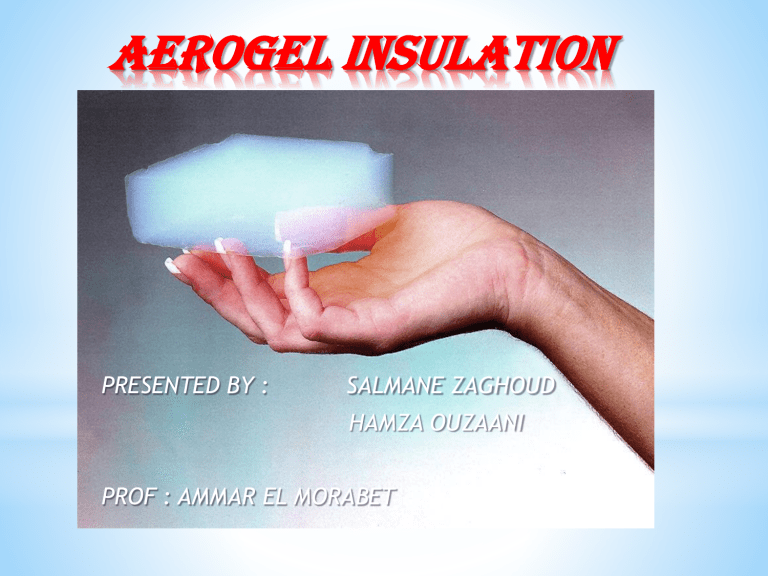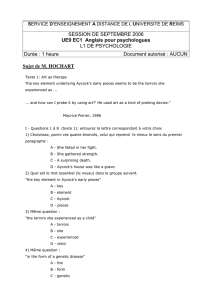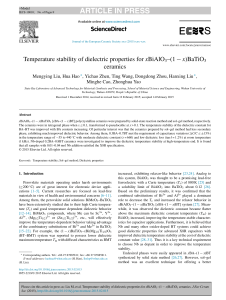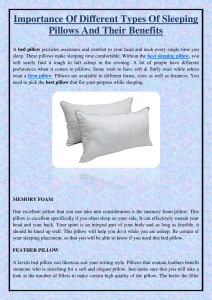
AEROGEL INSULATION PRESENTED BY : SALMANE ZAGHOUD HAMZA OUZAANI PROF : AMMAR EL MORABET Summary I. InTRODUCTION II. AEROGEL’s definition III. How it’s made IV. Chemical and Physical Properties of Aerogel V. Applications of Aerogel VI. CONCLUSION. 1-INTRODUCTION Nowadays everyone is looking for comfort in housing by providing houses that are able to adapt to all seasons and conditions, and among the solutions brought by researchers in the field of construction we find Aerogel, which saved the construction companies from the problem of thermic transfer. 2-AEROGEL’s définitiOn Aerogel are the world's lightest solid materials, composed of up to 99.98% air by volume. Aerogels are a diverse class of amazing materials with properties unlike anything else. Transparent super insulating silica aerogels exhibit the lowest thermal conductivity of any solid known. 3-The making of Aerogel In general terms, aerogel is created by drying a gel, in a high temperature environment. First the gel is created in a solution, and then the liquid component is removed via supercritical drying, which removes liquid slowly in order to maintain the structural shape. This liquid component is then replaced by air. Aerogel was first created in 1931 by Samuel Stephens Kistler, with carbon aerogels first introduced in the 1980’s. 4-Chemical and Physical Properties of Aerogel Low mean free path of diffusion High specific surface area (for a nonpowder material) Low thermal conductivity Low sound speed Low refractive index Low dielectric constant 5-Applications of Aerogel *Wetsuits *Firefighter suits *Skylights *Windows *rockets *Paints *Cosmetics *Nuclear weapons 6-CONCLUSION In the end, we cannot afford the forces that the Aerogel innovation has made great strides in the field of construction and we hope that other innovations such as aerogel to advance this field.






